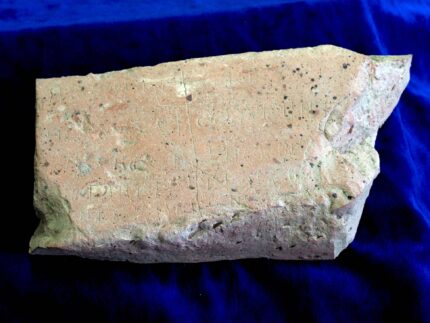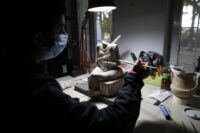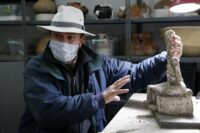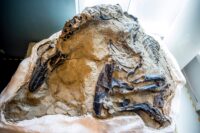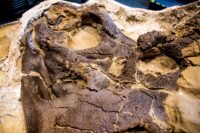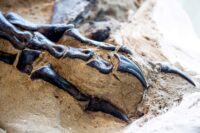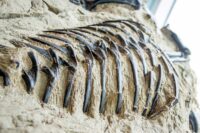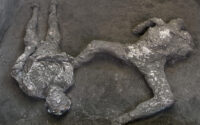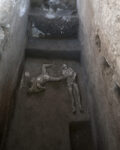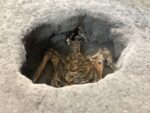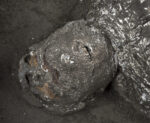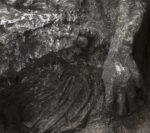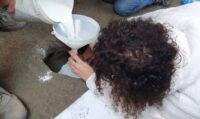Cambridge University Library has launched a public appeal for the recovery of two of Charles Darwin’s notebooks that have gone missing, likely stolen. One of them contains an iconic drawing known as the “Tree of Life” or “transmutation diagram” and both of them are of inestimable value. It’s a very cold case and there are no leads currently.
Dr Jessica Gardner, University Librarian and Director of Library Services since 2017, said: “I am heartbroken that the location of these Darwin notebooks, including Darwin’s iconic ‘Tree of Life’ drawing, is currently unknown, but we’re determined to do everything possible to discover what happened and will leave no stone unturned during this process.
“This public appeal could be critical in seeing the notebooks safely return, for the benefit of all, and I would ask anyone who thinks they may be able to help to get in touch.
“We would be hugely grateful to hear from any staff, past or present, members of the book trade, researchers, or the public at large, with information that might assist in the recovery of the notebooks.
“Someone, somewhere, may have knowledge or insight that can help us return these notebooks to their proper place at the heart of the UK’s cultural and scientific heritage.”
The notebooks were kept in the Special Collections Strong Rooms, an ostensibly secure location for the library’s most valuable and rare volumes. The last time they were recorded as having left the room was when they were photographed from September to November 2000. A routine check in January 2001 found the two notebooks and the bespoke blue box that held them were not back in place. An unfortunate assumption was made that they had simply been misplaced and would turn up again somewhere in the vast collection.
This was not an unreasonable belief, as appallingly sanguine as it seems now. The Cambridge University Library has an absolutely massive collection of Darwin material. Between letters, plans, drawings, manuscripts, 189 archives boxes and Darwin’s personal library of 734 books and 6,000 periodicals, the University Library’s Darwin collection covers more than 320 feet of shelving.
Gardner said: “Security policy was different 20 years ago. Today any such significant missing object would be reported as a potential theft immediately and a widespread search begun. We keep all our precious collections under the tightest security, in dedicated, climate-controlled strong rooms, meeting national standards.
“The building has transformed significantly since the notebooks were first reported as missing in terms of additional security measures such as new strong rooms, new specialist reading rooms, CCTV, enhanced access control to secure areas, and our participation in international networks on collections security.”
There were limited searches for the notebooks over the years, but all have been unsuccessful. This year the first comprehensive targeted search of the library’s storage facilities by specialist staff was begun, but again the notebooks could not be found. The full search will take five years to complete. In the meantime, the loss has been reported as a suspected theft to the Cambridgeshire Police, Interpol and the national Art Loss Register.
Darwin wrote down his thoughts about the speciaton, extinction and adaptation after his return from the voyage on the Beagle to South America in several notebooks. Notebook B contains his notes from July 1837 to February 1838. Notebook C was written between February and July 1838. On page 36 of Notebook B he drew a rough diagram to illustrate his idea of descent of species, how branches multiply as species that are well-adapted to their environments reproduce in great numbers, spread out geographically and diversify, “transmuting” from ancestral forms, while those who are not die out.

I think
[Tree of Life diagram]
Case must be that one generation then should be as many living as now
To do this & to have many species in same genus (as is). REQUIRES extinction.
Thus between A. & B. immens gap of relation C & B. the finest gradation, B & D rather greater distinction
Thus genera would be formed.— bearing relation
[page 37]
to ancient types.— with several extinct forms, for if each species “an ancient” is capable of making, 13 recent forms.— Twelve of the contemporarys must have left no offspring at all, so as to keep number of species constant.
The good news is those photographs taken in 2000 right before it disappeared with excellent high-resolution images that were uploaded to the University of Cambridge Digital Library. Full scans of covers and pages can be browsed online, and Darwin’s handwritten notes have been transcribed as part of the Darwin Manuscripts Project website.
